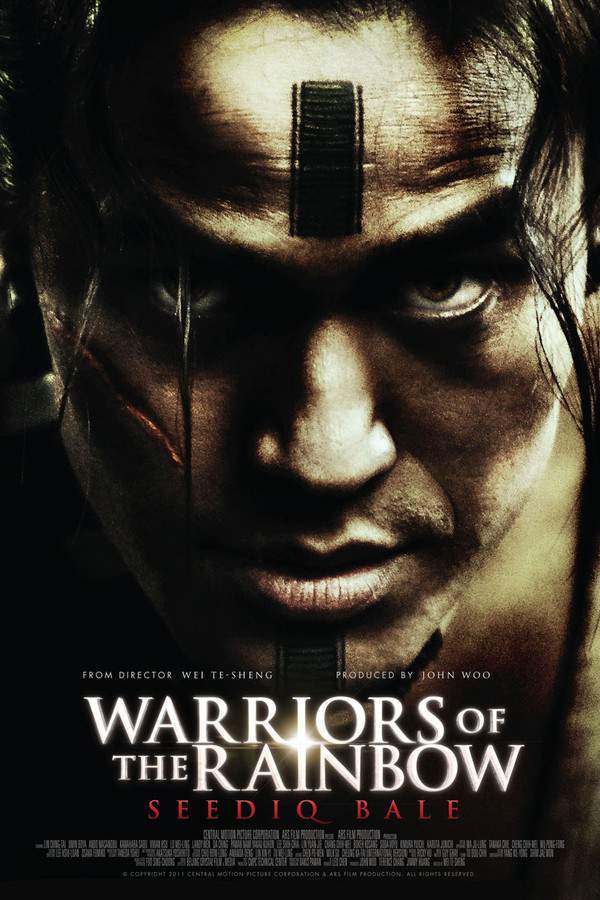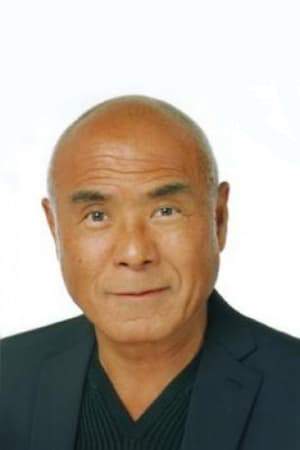Warriors of the Rainbow: Seediq Bale 2012

During the Japanese occupation of Taiwan, the Seediq people face the crushing of their culture and identity. Driven by generations of oppression, Mona Rudao grapples with a choice between submission and preserving his people’s dignity. When a group of young warriors seek revenge against their oppressors, Mona Rudao’s leadership guides them on a perilous quest for justice. Their actions spark a brutal and bloody conflict that will determine the fate of both sides.
Does Warriors of the Rainbow: Seediq Bale have end credit scenes?
No!
Warriors of the Rainbow: Seediq Bale does not have end credit scenes. You can leave when the credits roll.
Meet the Full Cast and Actors of Warriors of the Rainbow: Seediq Bale
Explore the complete cast of Warriors of the Rainbow: Seediq Bale, including both lead and supporting actors. Learn who plays each character, discover their past roles and achievements, and find out what makes this ensemble cast stand out in the world of film and television.
External Links and Streaming Options
Discover where to watch Warriors of the Rainbow: Seediq Bale online, including streaming platforms, rental options, and official sources. Compare reviews, ratings, and in-depth movie information across sites like TMDb, Wikipedia, Rotten Tomatoes or Metacritic.
Ratings and Reviews for Warriors of the Rainbow: Seediq Bale
See how Warriors of the Rainbow: Seediq Bale is rated across major platforms like IMDb, Metacritic, and TMDb. Compare audience scores and critic reviews to understand where Warriors of the Rainbow: Seediq Bale stands among top-rated movies in its genre.

62
Metascore
7.4
User Score


69%
TOMATOMETER

79%
User Score

80
%
User Score

3.44/5
From 9 fan ratings
Take the Ultimate Warriors of the Rainbow: Seediq Bale Movie Quiz
Challenge your knowledge of Warriors of the Rainbow: Seediq Bale with this fun and interactive movie quiz. Test yourself on key plot points, iconic characters, hidden details, and memorable moments to see how well you really know the film.
Warriors of the Rainbow: Seediq Bale Quiz: Test your knowledge of the dramatic tale of resilience and rebellion in 'Warriors of the Rainbow: Seediq Bale'.
What year did the Treaty of Shimonoseki, which ceded Taiwan to Japan, take place?
1895
1900
1885
1920
Show hint
Full Plot Summary and Ending Explained for Warriors of the Rainbow: Seediq Bale
Read the complete plot summary of Warriors of the Rainbow: Seediq Bale, including all major events, twists, and the full ending explained in detail. Explore key characters, themes, hidden meanings, and everything you need to understand the story from beginning to end.
In the scenic valleys and mist-covered mountains of Taiwan, an evocative saga of courage and defiance emerges amid the shadows of colonial subjugation. By the year 1895, with the signing of the Treaty of Shimonoseki that ceded the island to Japan, the tides of change began to challenge the native populace. Standing strong against the surge of foreign influence is Mona Rudao, a proud warrior and chief of Mehebu village, who rises as a formidable figure in the resistance against the Japanese invaders.
The narrative opens with a peaceful hunt along a river, abruptly interrupted when two Bunun men are surprised by Seediq warriors under the command of the young Mona Rudao. In a display of raw hunting skill, he swiftly takes down a large boar, asserting his dominance over the land, and laying the groundwork for the ensuing strife between the Seediq people and their Japanese adversaries.
As tensions rise, the warriors of Mehebu find themselves embroiled in conflicts with the Japanese military, which employs sly tactics to suppress the Seediq resolve. Caught in the crossfire is Temu Walis, a spirited member of the Toda tribe who meets Mona Rudao in a series of brutal confrontations. The struggle intensifies further when Mona Rudao’s father, Rudao Luhe, suffers critical injuries, thrusting Mona Rudao into the heavy burden of leading his tribe in a fight for survival against the growing clutches of their colonizers.
As the season changes, the once-vibrant Seediq culture begins to crumble like the banks of their ancestral rivers. The men are forced to abandon their traditional practices, turning to logging for minimal financial gains, while the women are pushed to forsake their weaving traditions for labor in Japanese households. Children, including Pawan Nawi, attend local schools, their education invigorating but filled with a sense of loss for the heritage of their forefathers.
In a moment of darkness, the peace that Mona Rudao cherishes is disrupted by Yoshimura, a new Japanese policeman whose oppressive presence instigates disputes over hunting grounds, pitting tradition against modernity. The climax of these tensions erupts at a wedding in Mona Rudao’s village, where Yoshimura’s arrogance leads to a violent clash between the cultures. With the frustrations boiling over, the young men, including Piho Sapo from Hogo village, rally around Mona Rudao, igniting the flames of war.
As the momentous day of war approaches, Mona Rudao seeks to unify his people, planning an attack on October 27th—a date shrouded in dual purpose as the local schoolyard serves both as a sports venue and a target for their uprising. While the men prepare for battle, the women, including Mahung Mona, sense the looming shadows of conflict.
Dakis Nomin, having embraced Japanese culture and now known as Hanaoka Ichiro, faces Mona Rudao at a waterfall. The conversation re-affirms Mona Rudao’s resolve to fight, leading to a spiritual moment of communion with the past as he contemplates a bloody but necessary fate. With war strategies set, Mona Rudao embarks on a daring plan to launch a surprise attack against the Japanese police on their unsuspecting day of gathering.
As they storm the police fortress on that fateful day, a cascade of violence ensues, culminating in the brutal slaughter of Japanese civilians and military personnel. Caught in the fervor, Pawan Nawi participates in the chaos, forever marking his journey from student to participant in the violence that defines their struggle. Amidst the turmoil, however, the cost of their victory becomes painfully evident as many lives are upended.
Navigating through this agony, the film transitions into its next act, bringing Dakis Nomin’s final reflections into focus. The introduction of Kojima Genji, a policeman facing a severe crisis, sets the stage for a power struggle, revealing the tactics employed to ensnare Temu Walis into siding against Mona Rudao. The Japanese military launches a brutal counter-offensive, drawing on overwhelming numbers in their bid to crush the Seediq spirit.
With every act of desperation, hope dwindles further, leading to heartbreaking scenes of sacrifice as Mona Rudao and his allies find themselves pushed into a corner. The searing imagery of the women’s suicides and the men’s final stands paint a tragic picture, where honor and survival become fraught with complex emotion.
In this fervent depiction of resistance, the film elegantly interlaces the threads of courage, despair, and community, revealing the transformative nature of war and the unyielding spirit of the Seediq people as they battle for their identity and survival amidst looming extinction. As the story wanes, the legacy of Mona Rudao remains, encapsulated in a poignant journey beyond the realm of conflict, concluding with a mystical vision of rebirth and the eternal passage of their stories through generations.
Uncover the Details: Timeline, Characters, Themes, and Beyond!
Watch Trailers, Clips & Behind-the-Scenes for Warriors of the Rainbow: Seediq Bale
Watch official trailers, exclusive clips, cast interviews, and behind-the-scenes footage from Warriors of the Rainbow: Seediq Bale. Dive deeper into the making of the film, its standout moments, and key production insights.
Quick Links: Summary, Cast, Ratings, More

What's After the Movie?
Not sure whether to stay after the credits? Find out!
Explore Our Movie Platform
New Movie Releases (2025)
Famous Movie Actors
Top Film Production Studios
Movie Plot Summaries & Endings
Major Movie Awards & Winners
Best Concert Films & Music Documentaries
Movie Collections and Curated Lists
© 2025 What's After the Movie. All rights reserved.
















